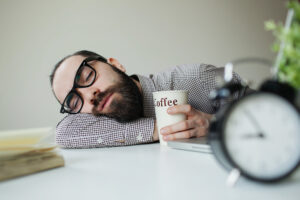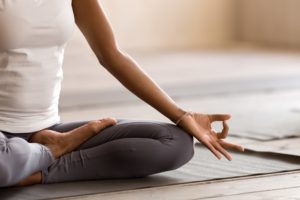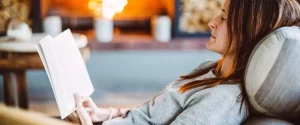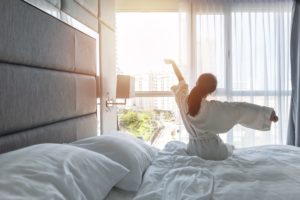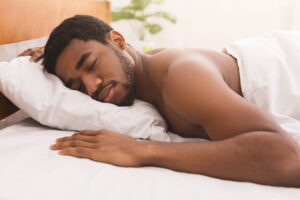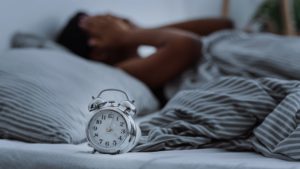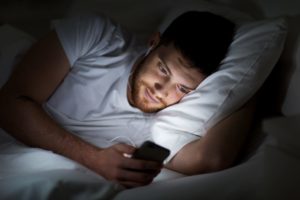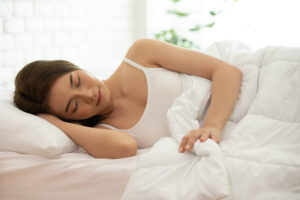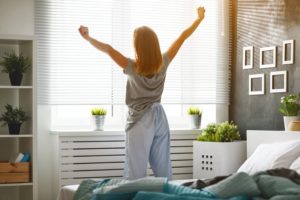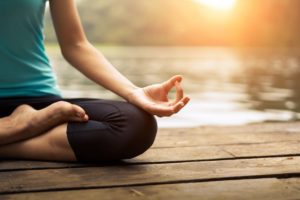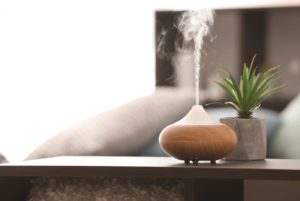Sleep Dictionary
Sleep is a fundamental element of good health, but the terminology around sleep can make it hard to understand how sleep works and how to sleep better.
As with many scientific and medical fields, sleep science uses numerous technical terms. In some cases, they are strictly defined to standardize terminology used by researchers and health professionals. In other cases, terms are used colloquially and, therefore, they are more loosely defined.
This sleep dictionary reviews key terminology, explains the relevant meanings, and offers context about how they may be used. Our goal is to make sure that you get the most out of our evidence-based resources by better understanding key issues that affect your sleep.
Because of their complexity, sleep disorders are not covered in this sleep dictionary. Readers looking for information about sleep disorders are encouraged to visit our landing page for sleep disorders. There you can find a general overview as well as links to in-depth resources about specific conditions.
- Actigraphy: Tracking the body’s movement over time. Actigraphy, such as with wearable devices, can be used to measure the amount of time that a person spends doing different types of activities, including sleep.
- Acute: Short-term, sudden, or severe. When used to describe sleeping problems or disorders, acute is often used to differentiate from chronic conditions.
- Arousal: An abrupt change from a deeper to a lighter stage of sleep or from sleeping toward waking up. In a sleep study, arousals may be detected by changes in heart rate, breathing, or muscle activity.
- Artificial light: Light that comes from a source other than the sun.
- Aromatherapy: The use of specific smells to affect aspects of physical or mental health. In the context of sleep, aromatherapy typically involves disseminating fragrances meant to induce relaxation at night or alertness during the day.
- Atonia: Temporary paralysis of most muscles of the body. Atonia occurs during rapid eye movement (REM) sleep, stopping muscle activity except for the muscles that control breathing, pulse, and eye movement.
- Awakenings: The act of waking up from any stage of sleep. In a sleep study, awakenings may be detected by changes in activity levels of the heart, lungs, brain, and muscles.
- Bad dream: A dream period that involves negative or bothersome content but does not cause a person to wake up from the dream.
- Bilevel positive airway pressure (BiPAP) device: A machine that uses pressurized air pumped through the mouth or nose to keep the airway open and prevent lapses in breathing. It is often used to treat obstructive sleep apnea. In a BiPAP machine, the level of air pressure is different for inhalation and exhalation.
- Biphasic sleep: A sleep pattern in which a person’s total daily sleep is broken into two segments. The most common biphasic sleep pattern involves one sleep period at night and one nap during the day.
- Blue light: A type of light with a specific wavelength that is part of the visible light spectrum. Blue light is often emitted by many LEDs and electronic devices and may have a greater effect on circadian rhythm than other wavelengths of light.
- Chronic: Long-lasting or ongoing. When used to describe sleeping problems or disorders, the term chronic is often used to differentiate from acute conditions.
- Circadian alerting system: A process of signals sent from the brain that promote wakefulness and alertness, helping to regulate sleep-wake patterns.
- Circadian pacemaker: A part of the brain known as the suprachiasmatic nucleus (SCN) that controls circadian rhythm, sending signals to regulate the function of different bodily systems. Light exposure is a central factor that influences the function of the circadian pacemaker.
- Circadian rhythm: The body’s approximately 24-hour internal clock that helps coordinate the timing of a wide range of physical and mental functions, including sleep.
- Chronobiology: The study of natural rhythms that affect living organisms. In sleep science, chronobiology largely focuses on circadian rhythm.
- Chronotype: A pattern of daily sleep-wake activity that reflects a person’s unique circadian rhythm and natural preferences.
- Cognitive-behavioral therapy for insomnia (CBT-I): A type of counseling that aims to change negative thinking about sleep while encouraging healthier sleep habits. It is a specific form of cognitive-behavioral therapy (CBT) adapted to address insomnia.
- Cognitive impairment: Difficulty related to mental functions such as thinking, attention, reaction time, memory, learning, and judgment.
- Continuous positive airway pressure (CPAP) device: A machine that delivers a steady stream of pressurized air through the mouth or nose to keep the airway open and reduce disordered breathing. It is a common treatment for obstructive sleep apnea. With a CPAP machine, the level of pressure stays the same during inhalation and exhalation.
- Daytime impairment: Negative effects of sleeping problems that occur during waking hours. Daytime impairments can include cognitive deficits, physical problems, and emotional or mood disturbances.
- Deep sleep: The last stage of non-rapid eye movement (NREM) sleep. During this stage, breathing and heart rate drop to their lowest levels, and brain activity slows but has bursts of specific types of brain waves known as delta waves. Deep sleep is also known as stage 3, N3, delta sleep, or slow-wave sleep.
- Delta sleep: The sleep stage marked by high amplitude brain waves known as delta waves. Delta sleep is the last stage of NREM sleep, also known as stage 3, N3, deep sleep, or slow-wave sleep.
- Diurnal: Activity during the daytime.
- Dream: Thoughts or images that occur while sleeping. Dreams can occur during any stage of sleep but are most common and vivid in REM sleep. Dream content can be positive, negative, or confusing. It is believed that we do not remember most dreams.
- Dream recall: The ability to remember dream content after waking up.
- Electroencephalograph (EEG): A test that uses sensors on the scalp to measure brain activity. Patterns of brain waves on an EEG help identify stages of the sleep cycle. An EEG is a normal part of a polysomnogram, a type of specialized sleep study.
- Entrainment: In the context of sleep, the synchronization of a person’s circadian rhythm with the daily cycle of light and dark. The circadian pacemaker’s response to light is a core part of this process of entrainment.
- Excessive daytime sleepiness (EDS): Drowsiness or difficulty staying alert or awake during the day.

- Fatigue: A feeling of a lack of mental or physical energy. Fatigue frequently overlaps with excessive daytime sleepiness, cognitive impairment, and other symptoms of sleep problems.
- Homeostatic sleep drive: The body’s self-regulating system for sleepiness. Sleep drive, or the need to sleep, is at a low point shortly after waking up and grows the longer a person goes without sleep.
- Hormones: Chemical messengers that travel via blood vessels and control a vast array of bodily functions. The system of hormone production and regulation is known as the endocrine system.
- Hyperarousal: A state of heightened stress, anxiety, or feeling “on alert.” Hyperarousal is associated with insomnia and the inability to fall asleep or stay asleep.
- Hypersomnolence: Excessive sleepiness during times when a person expects to be awake. Often referred to as excessive daytime sleepiness or hypersomnia.
- Hypersomnia: A sleep disorder marked by excessive sleepiness when a person should feel awake. Hypersomnia is characterized by — and may be referred to as — hypersomnolence or excessive daytime sleepiness.
- Hypnagogic: Taking place in the time period right around falling asleep.
- Hypnogram: A graph that visually documents the progression of sleep during one sleep period. Usually produced during a sleep study (polysomnogram), a hypnogram shows the amount of time spent in each sleep stage and the number of awakenings.
- Hypnopompic: Taking place in the period right around waking up from sleep.
- Hypnotic: A type of medication that induces sleepiness.
- Hypopnea: Extremely slow or shallow breathing.
- Hypoxia: A state of decreased oxygen level. Hypoxia in certain tissues can be a consequence of sleep-disordered breathing.
- Insomnia: A sleep disorder in which a person cannot fall asleep or sleep as long as they want to, even though they have the opportunity to sleep. Insomnia can result in daytime impairment, and is typically categorized as acute or chronic. Insomnia has a strict clinical definition, but the term is often employed colloquially to refer to sleeping problems generally.
- Insufficient sleep: A condition in which the mind or body do not function properly because of short sleep duration or excessive sleep fragmentation.
- Jet lag: A condition in which circadian rhythm is desynchronized from the light-dark cycle because of rapid travel across multiple time zones.
- Light sleep: A common term for stage 1 or N1 sleep when a person is most easily awoken. Light sleep may at times refer to both stage 1 and stage 2 NREM sleep.
- Light therapy: A treatment for some sleep problems that employs short periods of exposure to a very bright light to alter a person’s circadian timing.
- Long sleep: A sleep period that lasts for more hours than is recommended based on a person’s age and health.
- Lucid dream: A dream in which the person is actively aware of the fact that they are dreaming.
- Melatonin: A hormone produced by the body that helps to regulate circadian rhythm and sleep. Melatonin is normally produced in response to darkness. Melatonin is also found in some foods. A prescription sleep aid can increase melatonin levels, and synthetically produced melatonin is sold as a dietary supplement sleep aid.
- Metabolism: A general term that includes a range of bodily processes to create and use energy.
- Microsleep: A very short lapse into sleep. Microsleeps typically last for just a few seconds and are associated with excessive daytime sleepiness.
- Monophasic sleep: A sleep pattern in which a person’s total daily sleep occurs during only one sleep period.
- N1 sleep: N1 refers to the first stage of NREM sleep and is also known as stage 1.
- N2 sleep: N2 is the second stage of NREM sleep, also known as stage 2.
- N3 sleep: N3 is the third and final stage of NREM sleep and is also known as stage 3, deep sleep, delta sleep, or slow-wave sleep.
- Nap: A short sleep period, usually taken during the day, apart from a person’s primary sleep period. A nap may also be referred to as a siesta, its name in Spanish.
- Natural light: Light that is produced by the sun.
- Neurotransmitter: A type of chemical that facilitates communication among brain cells. Changes in neurotransmitter activity levels affect most types of physical and mental functions, including sleep and wakefulness.
- Nightmare: A dream with negative content that causes a person to wake up from sleep. Immediately after waking up, a person normally remembers the content of the nightmare.
- Nocturia: Frequent urination at night. Most technical definitions consider nocturia to be awakening one or more times to urinate, but some studies focus on the effects of multiple bathroom trips.
- Nocturnal: Taking place during the night.
- Non-rapid eye movement sleep (NREM): One of two types of sleep, NREM includes the first three sleep stages (N1, N2, and N3). During NREM sleep, the brain and body’s activity levels drop noticeably compared to wakefulness. The proportion of time spent during NREM sleep is usually highest during the first half of a sleep period.
- Partial sleep deprivation: Sleep duration that is greater than zero but less than the recommended amount. The amount of sleep allowed in research about partial sleep deprivation can vary by study. Partial sleep deprivation is distinct from total sleep deprivation, which involves not sleeping at all.
- Pharmacotherapy: The use of medications such as prescription drugs.
- Polysomnography: Use of a specialized sleep study, known as a polysomnogram, that tracks multiple elements including brain waves, muscle activity, and eye movement. Polysomnography is typically performed in a sleep clinic and may be used to diagnose numerous types of sleep disorders.
- Positive airway pressure (PAP) device: A machine that pumps pressurized air through the nose or mouth to help keep the airway at the back of the throat open during sleep. PAP devices are used primarily to treat obstructive sleep apnea. Examples include continuous (CPAP) and bilevel (BPAP) machines.
- Rapid eye movement (REM) sleep: The stage of sleep with the highest brain activity and often associated with intense dreaming. During REM sleep, most of the muscles of the body are paralyzed except for those that control breathing, heart rate, and eye movement. The largest segments of REM sleep normally occur during the second half of a sleep period.
- REM rebound: An increase in the amount of time spent in REM sleep that occurs after a period of time with decreased total sleep or decreased REM sleep.
- Screen time: Time spent using electronic devices including mobile phones, tablets, laptops and other computers, and televisions.
- Sedative: A substance or medication that induces drowsiness.
- Shift work: A job that requires working schedules that differ from a standard 9 a.m. to 5 p.m. workday. Shift work often involves working in the evening or overnight.
- Short sleep: Total sleep time that is less than the recommended amount based on a person’s age and health.
- Sleep aid: A substance or medication used to try to improve sleep. Most sleep aids are either prescription drugs, over-the-counter medications, or dietary supplements. Other approaches, such as aromatherapy, may also be considered sleep aids.
- Sleep apnea: A type of sleep disorder marked by disordered or abnormal breathing. The two main types are obstructive sleep apnea and central sleep apnea.
- Sleep architecture: The cyclical pattern of sleep as it shifts between the different sleep stages, including NREM and REM sleep. Sleep architecture can be represented by a graph called a hypnogram.
- Sleep bruxism: Clenching or grinding of the teeth during sleep.
- Sleep continuity: Sleeping for a period of time without interruptions or awakenings.
- Sleep cycle: A progression through individual sleep stages, including NREM and REM sleep. On an average night, a person goes through 4-6 sleep cycles that last between 70 and 120 minutes each.
- Sleep debt: A cumulative effect of an ongoing or extended period of insufficient sleep.
- Sleep deficiency: An inadequate amount of rest that occurs either because of curtailed sleep duration and/or sleep fragmentation. Sleep deficiency may also be referred to as insufficient sleep or sleep insufficiency.
- Sleep deprivation: An amount of sleep that is less than recommended based on a person’s age and health. While traditionally used to refer only to sleep quantity, sleep deprivation may be used colloquially to refer to insufficient sleep or sleep deficiency.
- Sleep disturbance: A disruption in sleep that causes arousal or awakening.
- Sleep duration: The quantity of time that a person sleeps. Sleep duration may be measured for just one sleep period or over the course of a 24-hour day.
- Sleep efficiency: The proportion of time during a sleep episode that is actually spent sleeping. It is calculated by dividing total sleep time by total time in bed.
- Sleep environment: The setting where a person sleeps. Usually a bedroom, the sleep environment includes elements such as the mattress and bedding as well as ambient light, sound, smell, and temperature.
- Sleep fragmentation: Interruption of sleep that involves arousals or awakenings. Sleep fragmentation usually refers to repeated disruptions during a sleep period.
- Sleep hygiene: An individual’s habits and routines that affect sleep, including the setup of their sleep environment. Healthy sleep hygiene is a common component of efforts to resolve sleep problems.
- Sleep inertia: A drowsy or groggy feeling that occurs shortly after waking up from sleep.
- Sleep latency: The amount of time from “lights out,” or bedtime, to actually falling asleep.
- Sleep maintenance: Staying asleep for the desired or planned amount of time after initially falling asleep.
- Sleep onset: Falling asleep or initiating a sleep period.
- Sleep pattern: A person’s schedule of bedtime and wake-up time as well as nap behavior. Sleep pattern may also include time and duration of sleep interruptions.
- Sleep phase: The timing of a person’s typical sleep period. A person’s sleep phase can be advanced, delayed, or otherwise disrupted, which may affect sleep duration. This may also be referred to as the sleep-wake phase and is often related to circadian rhythm.
- Sleep quality: An individual’s satisfaction with their sleep, integrating aspects of sleep initiation, sleep maintenance, sleep quantity, and feeling refreshed upon awakening. Sleep quality is not always defined in the same way and often relies on subjective assessments by individuals of how they slept.
- Sleep regression: A worsening of sleep in infants or toddlers after a period of improved sleep. Sleep regressions are not objectively or universally defined but may be noticed by parents who encounter a change in their child’s sleep habits.
- Sleep stages: Four parts of the sleep cycle that are broken into NREM and REM sleep categories. Sleep stages can be detected in a sleep study based on changes in brain, body, and muscle activity.
- Sleeping position: An individual’s physical posture when sleeping. The main sleeping positions are on the side (right or left lateral decubitus), back (supine), and stomach (prone).
- Slow-wave sleep: The third stage of NREM sleep identified by a specific pattern of brain waves. Slow-wave sleep is also called stage 3, N3, deep sleep, or delta sleep.
- Somnolence: The state of feeling sleepy or drowsy.
- Snoring: An audible vibration of tissue at the back of the throat. When frequent, snoring may be known as chronic snoring or primary snoring.
- Soporific: Inducing drowsiness.
- Suprachiasmatic nucleus (SCN): Located in the hypothalamus, this part of the brain regulates the body’s circadian rhythm. The SCN is also known as the circadian pacemaker.
- Time in bed: The total amount of time that a person spends in bed regardless of whether or not they are sleeping during that time. This term is most often used in sleep studies to calculate sleep efficiency.
- Total sleep deprivation: A period of time without any sleep, such as when pulling an all-nighter.
- Total sleep time (TST): The amount of time that a person spends actually sleeping during a planned sleep episode. TST is the sum of all REM and NREM sleep in a sleep episode.
- Vivid dream: A dream episode that is especially immersive or clear.
- White noise: A noise that combines sounds at all audible frequencies played at the same amplitude and in random order. White noise is often perceived as a “shhh” or static-like sound and may be used to block out external noise when trying to sleep.
- Zeitgeber: A factor involved in entrainment of a person’s circadian rhythm to the 24-hour day-night cycle. Light is considered to be the most powerful zeitgeber.

Still have questions? Ask our community!
Join our Sleep Care Community — a trusted hub of product specialists, sleep health professionals, and people just like you. Whether you’re searching for the perfect mattress or need expert sleep advice, we’ve got you covered. Get personalized guidance from the experts who know sleep best.




